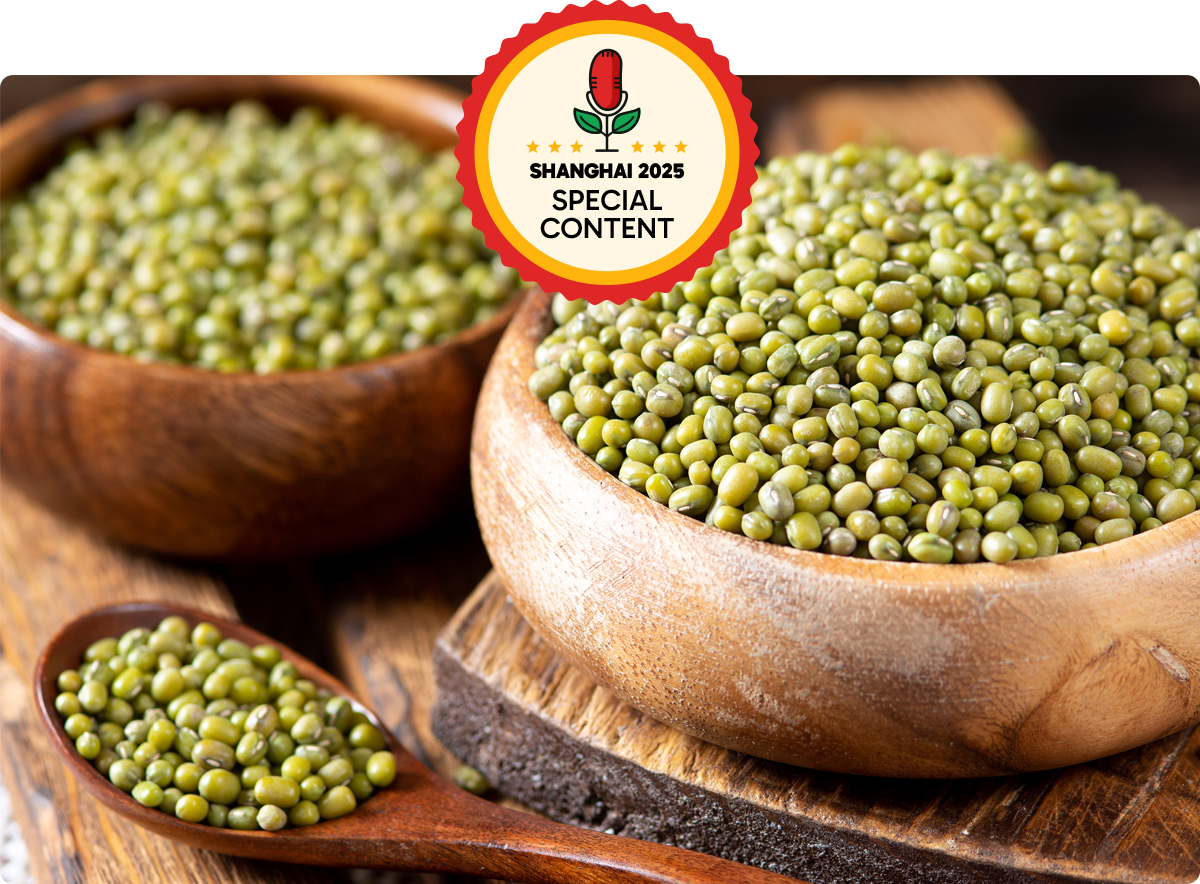August 7, 2025
Shyam Narsaria of Arvee International shares what’s driving Myanmar’s pulse sector and what to expect in 2025—plus insights on China’s ever-growing appetite for mung, new suppliers entering the scene, and the critical role of pesticide compliance in export success.


Production for black matpe last year was around 750 KMT, but this year we expect around 900 KMT – 20% up year-on-year. We are expecting a 17-18% rise in pigeon pea production – up to about 350 KMT. For mung beans, last year's production was around 600 KMT, and this year should see a 10% jump up to between 625 KMT-650 KMT. It's always hard to define our acreage because we have many very small farms for hand-to-mouth farmers, and even the government struggles to identify exact acreage, but we know that production is going up because the Myanmar government is pushing all associations and farmers to increase exports and production. They supported farmers with quality seeds and fertilisers to help grow production, which is a positive for the country. For the year 2025, we're expecting more than two MMT of total pulse production – close to 2.2 MMT.

China’s insatiable demand for mung beans has opened the door to new suppliers like Brazil and Argentina—but with over 500 KMT shipped yearly, Myanmar remains the top source.
Demand is lower than last year because of India’s opening of the yellow peas license until March 2026. It is also monsoon season, and there have been no festivals. From 10th August onwards, demand will start picking up for the next three months' festival period in India. Once all the carryover stock from the millers is finished, we'll see good demand for pulses because of the current price levels. Almost all pulses, such as pigeon peas and black matpe, are over 20% below the minimum support price (MSP). The prices are attractive, and fresh vegetable prices – onions, potatoes, tomatoes – are currently 4 to 5 times higher than the normal price. Whenever that happens, the middle-class population shifts to pulses. That's another reason I feel demand will come soon. I think we will see at least 10% rises in demand coming over the next 30-45 days for all Myanmar pulses.
Demand for mung beans has been tremendously good, but not from the Indian side – from the Chinese side. We've exported around 325 KMT over the last six months – 50% of the average.
Black matpe is lagging, partly because of the pressure from the Brazilian supply to India. Buyers and traders are a bit confused because the quality of the Brazilian cargo that arrived over the last two months wasn’t so good. Brazilian black matpe has a premium over Myanmar’s, and millers were not happy with recent shipments.
Last year, we exported around 625 KMT of mung, with around 80% going to China. Two or three years ago, most of the beans were traded into China via the border, but the last couple of years have been different – the border gates are closed and mung beans aren’t going by the border anymore. Or if they are, it's a very small number. Over the last six months, around 275 KMT of mung beans have gone to China, with some going via Vietnam, but it is safe to assume 90% is going to China by the sea route.
I consider it to be over 1 MMT – they bring in around 500 KMT from Myanmar, and then the rest they get from Venezuela, Uzbekistan and other countries.

Yes, Argentina and Brazil have begun supplying part of China's mung bean imports. But there is space in the market because China is a very big buyer that buys quality cargo for polishing and sprouting. This year, the prices have been excellent too. If the CNF price is below 1000, China is always a buyer. But when the price was up 1250 CNF-1300 CNF, business was still being done – buying big quantities at such a high price shows that demand is really very good. There were some problems in the Chinese market due to the use of pesticides in Myanmarese mung beans – between 100-200 containers were rejected on arrival, but that is mostly resolved now. New entrants into the market, like Brazil and Argentina, will also need to take care to avoid using these pesticides.
Friends in China have told me that it's a cheap pesticide called Thiametoxin used by some farmers in Myanmar. Traders and exporters were not very happy because they believed the government should have controlled or limited exports that used Thiametoxin. China is very cautious about what it imports and pesticide levels.
So far, the monsoon has been good compared to last year – rainfall is more scattered, and I haven't heard any problems regarding flooding. For pulses, the monsoon only really affects pigeon peas, which are planted in May/June and harvested around December, but everything looks good at the moment.
Disclaimer: The opinions or views expressed in this publication are those of the authors or quoted persons. They do not purport to reflect the opinions or views of the Global Pulse Confederation or its members.